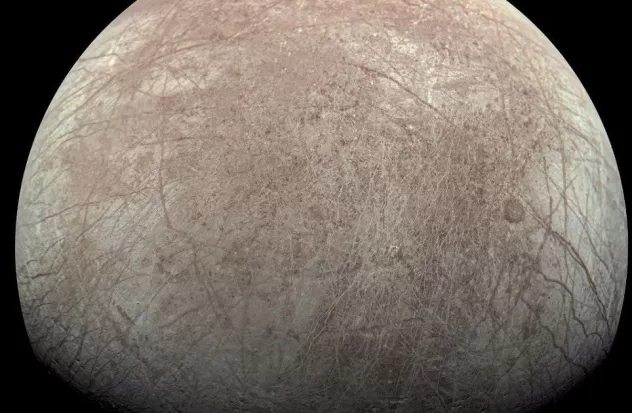CAPE CANAVERAL.-Research suggests that there is less oxygen than previously believed in the icy surface of Europa, a moon of Jupiterwhich could affect the chances of life in the satellite’s subterranean ocean.
Even with little or no oxygen, there could still be microbes in the ocean that is believed to exist several kilometers (miles) beneath Europa’s frozen crust. As for what else, “who knows,” said NASA scientist Kevin Hand, who was not involved in the study published Monday in Nature Astronomy.
More work is needed to confirm these findings, which contradict previous telescope observations of oxygen condensed in Europa’s ice, which indicated a higher concentration of oxygen, Hand said.
The new study is based on data collected by NASA’s Juno spacecraft during an especially close flight to Europa in 2022, at a distance of just 353 kilometers (219 miles).
An American and European team estimated that between 6 and 18 kilograms (13 to 39 pounds) of oxygen are produced on the surface of Europe per second.
Previous estimates were much higher, of up to 1,100 kg (2,245 pounds) of oxygen produced per second. So “unless Europe’s production was significantly higher in the past,” the new measurements establish “a smaller margin to support habitability,” the researchers said.
Oxygen is formed, like hydrogen, when radiation from Jupiter hits the frozen water crust on Europa.
The report’s lead author, James Szalay of Princeton University, said Juno’s flight was the first time a spacecraft had “directly sniffed” around Europa. “We couldn’t wait to look behind the curtain of its complex environment,” he explained in an email.
Although it is “a significantly narrower margin than we thought before, we can still learn a lot,” Szalay said.
It is unknown how much oxygen escapes into the moon’s atmosphere, how much remains in the ice, and how much could reach the underground sea.
NASA plans to launch the Europa Clipper this fall. The spacecraft will pass by Europa — which is almost the size of our Moon — dozens of times as it orbits the gas giant.
Source: With information from AP

